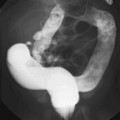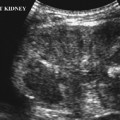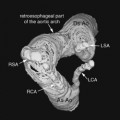CASE 81 A 2-year-old girl presents with recurrent urinary tract infection (UTI), and a voiding cystourethrogram (VCUG) is performed. Figure 81A Bilateral vesicoureteric reflux (VUR) into mildly dilated ureters and renal pelves (international grade III-IV) is seen (Fig. 81A). Note the urethra is opacified, indicating the patient was actively voiding when the radiograph was taken. Bilateral VUR (international grade III-IV) There is a well-recognized association between VUR, UTI, and consequent renal damage, so-called reflux nephropathy. In an individual patient, however, the significance of VUR is controversial. VUR, in general, is a weak predictor of pyelonephritis and subsequent renal impairment, although there does appear to be some association between higher grades of reflux and renal damage. Reflux is found in only one third of children with proven pyelonephritis. In addition, the development of a postpyelonephritic scar appears to be independent of demonstrable VUR. In children hospitalized with UTI, however, VUR is common. For this reason, the American Academy of Pediatrics recommends that infants and young children 2 months to 2 years of age with UTI should undergo ultrasound, with either VCUG or radionuclide cystography to detect dilatation secondary to obstruction or VUR. Ultrasound is routinely performed in the UTI setting to detect anatomic abnormalities of the urinary tract. Ultrasound findings are not, however, predictive of VUR. A VCUG is necessary to detect or exclude VUR regardless of the renal ultrasound findings.
Clinical Presentation

Radiologic Findings
Diagnosis
Differential Diagnosis
Discussion
Background
Etiology
Stay updated, free articles. Join our Telegram channel

Full access? Get Clinical Tree








